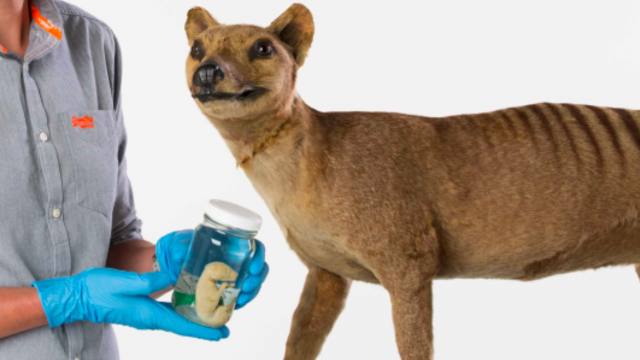The University of Melbourne has taken a huge step forward in bringing the thylacine (the Tasmanian tiger) back from extinction, after partnering with genetic engineering company Colossal Biosciences.
The Tasmanian tiger is the only marsupial apex predator ever recorded in Australia, and it was the world’s largest marsupial carnivore. Unfortunately, on September 7, 1936, the last recorded Tasmanian tiger, “Benjamin”, died from exposure at the Beaumaris Zoo in Hobart.
It has been estimated that, at the time of European settlement, 5,000 Tasmanian tigers thrived in the island state, though their numbers quickly declined as their habitats were destroyed, they were hunted and diseases were introduced. It’s assumed that 2,000 years ago, Tasmanian tigers roamed Papua New Guinea and the Australian mainland, however, the introduction of the dingo led to their extinction in all areas except Tasmania.
Now, with a $5 million donation from earlier this year, and the partnership with the Dallas-based Colossal Biosciences company, the researchers are aiming to bring the Tasmanian Tiger back to the land of the living. Colossal Biosciences is also working on bringing the woolly mammoth back from extinction.
Professor Andrew Pask, the leader of the Thylacine Integrated Genetic Restoration Research Lab (TIGRR) at Melbourne University says that it’s the most significant contribution to marsupial conservation research in Australia to date.
“We can now take the giant leaps to conserve Australia’s threatened marsupials and take on the grand challenge of de-extincting animals we had lost,” Pask said.
“A lot of the challenges with our efforts can be overcome by an army of scientists working on the same problems simultaneously, conducting and collaborating on the many experiments to accelerate discoveries. With this partnership, we will now have the army we need to make this happen.”
This partnership gives the TIGRR lab access to CRISPR DNA editing technology through Colossal Biosciences.
So excited to partner with @itiscolossal @federallamm to continue our work on the thylacine – very exciting times ahead for marsupial biology! pic.twitter.com/QV9tYyOLXo
— Andrew Pask (@AJ_Pask) August 16, 2022
Going forward, The University of Melbourne research team will set its sights on establishing reproductive technologies for the Tasmanian tiger, like IVF and gestation without a surrogate. Colossal Bioscience will be trying to reproduce thylacine DNA with CRISPR gene editing and computational biology tools. Marsupials with similar DNA will be identified to provide living cells and template genomes, that can then be recreated as thylacine genomes.
“The question everyone asks is ‘how long until we see a living thylacine’ – and I’ve previously believed in ten years’ time we would have an edited cell that we could then consider progressing into making an animal,” Pask added.
“With this partnership, I now believe that in ten years’ time we could have our first living baby thylacine since they were hunted to extinction close to a century ago.”
Pask added that the TIGRR lab is close to producing lab-created embryos from Australian marsupial sperm and eggs.
You can read the announcement on the University of Melbourne website.
